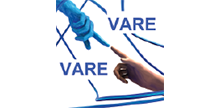Augmented reality in production management classes
- a,b, c Poznan University of technology
Cite as
P. Buń, P. Rewers, F. Gorski (2018). Augmented reality in production management classes. Proceedings of the 4th International Conference of The Virtual And Augmented Reality In Education (VARE 2018), pp. 72-77. DOI: https://doi.org/10.46354/i3m.2018.vare.012
Abstract
The paper presents preliminary results of research on integrating Augmented Reality in Production Management classes. The aim of the classes in Production Management, carried out for the Mechanical Engineering is to familiarize students with the widely understood organization of production processes. The main goal of the classes, in to which AR application was integrated, is to familiarize students with the rules and stages of the 5S tool. Evaluation of effectiveness of the proposed application was performed based on time of the task, number of errors, number of repetitions without errors, as well as with questionnaire in which students evaluated proposed solution.
References
- Azuma, R. T. A Survey of Augmented Reality, Presence: Teleoperators and Virtual Environments, 1997, 6, 4, pp. 355-385.
- Bowman, D. A.; Hodges, L. F. An evaluation of techniques for grabbing and manipulating remote objects in immersive virtual environments. In: Proceedings of the 1997 symposium on Interactive 3D graphics. ACM, 1997. p. 35-ff.
- Bowman D.A, McMahan, R.P., 2007 Virtual Reality: How Much Immersion Is Enough? Computer, 40 (7), pp. 36—43
- Billinghurst, M. Augmented reality in education. New horizons for learning, 2002, 12.5.
- Gorski F., et al., 2015. Immersive city bus configuration system for marketing and sales education, Procedia Computer Science, 75, pp. 137–146
- Gorski F., et al., 2017., Effective Design of Educational Virtual Reality Applications for Medicine using Knowledge-Engineering Techniques, EURASIA Journal of Mathematics, Science and Technology Education, 13 (2), 395-416
- Hamacher A. et al., 2016. Application of Virtual,Augmented, and Mixed Reality to Urology, Int Neurourol J; 20(3), 172-181.
- Ha, H., Hong, J., 2016. Augmented Reality in Medicine. Hanyang Medical Reviews, 36.4: 242- 247
- Kato, H., et al. Virtual object manipulation on a tabletop AR environment. In: Augmented Reality,
2000.(ISAR 2000). Proceedings. IEEE and ACM International Symposium on. Ieee, 2000. p. 111-119 - Kesim, M., Ozarslan, Y.. Augmented reality in education: current technologies and the potential for education. Procedia-Social and Behavioral Sciences, 2012, 47: 297-302
- Kilpatrick, J., 2003. Lean principles. Utah Manufacturing Extension Partnership, 68, 1-5.
- Krichenbauer, M., et al. Augmented Reality versus Virtual Reality for 3D Object Manipulation. IEEE transactions on visualization and computer graphics, 2018, 24.2: 1038-1048.
- Liker, J. K., The Toyota Way, McGraw-Hill, New York, 2004
- Martín-Gutiérrez J., Fabiani P., Benesova W., Meneses M.D., Mora C.E., Augmented reality to promote collaborative and autonomous learning in higher education, Computers in Human Behavior, 2015, 51, pp. 752-761
- Martín-Gutiérrez J., Mora C.E, Añorbe-Díaz B., González-Marrero A., Virtual Technologies Trends in Education, EURASIA Journal of Mathematics, Science and Technology Education, 2017, 13 (2), pp. 469-486
- Milgramt P., Kishinott F., Special issue on networked reality, IEICE Trans. Inf. Syst., E77–D (12) (1994), pp. 1321-1329
- Palmarini R., Erkoyuncu J.A., Roy R., 2017. An Innovative Process to Select Augmented Reality (AR) Technology for Maintenance, Procedia CIRP, , 59, pp. 23-28
- Palmarini, R., et al., 2018. A systematic review of augmented reality applications in maintenance. Robotics and Computer-Integrated Manufacturing, 49: 215-228.
- Ramirez H., Mendivil E.G., Flores P.R., Gonzalez M.C 2013. Authoring Software for Augmented Reality applications forthe use of maintenance and training process, Procedia Computer Science, 25, pp. 189-193
- Rumiński, D., Walczak K., 2013. Creation of Interactive AR Content on Mobile Devices , in:Lecture Notes in Business Information Processing: International Conference on Business Information Systems, Poznań, Poland, 19 - 20 June, 2013 , vol. 160, ed. Wil van der Aalst, John Mylopoulos, Michael Rosemann, M. J. Shaw, and C. Szyperski , Springer, pp. 258-269
- Shah, R., Ward, P. T., Lean manufacturing: context, practice bundles, and performance, Lean manufacturing: context, practice bundles, and performance, Volume 21, Issue 2, pp. 129-149
- Trojanowska J., Karwasz A., Machado J., Varela M.L.R., 2017. Virtual Reality Based Ecodesign In: Golinska-Dawson P., Kolinski A. (eds), Efficiency in Sustainable Supply Chain, Part II, Springer International Publishing, pp. 119—135
- Torres, F., Tovar, L., et al., 2017, A Learning Evaluation for an Immersive Virtual Laboratory for Technical Training applied into a Welding Workshop. EURASIA Journal of Mathematics, Science and Technology Education, 13 (2), pp. 521-532.
- Womack, J. P., Jones, D.T., Roos, D., The Machine that Changed the World: The Triumph of Lean Production, Rawson Macmillan, New York, 1990
- Wu, F., Liu, Z., Wang, J., & Zhao, Y., Establishment virtual maintenance environment based on VIRTOOLS to effectively enhance the sense of immersion of teaching equipment. In Proceedings of the 2015 International Conference on Education Technology, Management and Humanities Science (ETMHS 2015). Atlantis Press. doi:10.2991/etmhs-15.2015.93.
- Zawadzki P., Żywicki K., 2016. Smart Product Design and Production Control for Effective Mass Customization in the Industry 4.0 Concept, Management and Production Engineering Review, 7(3)
